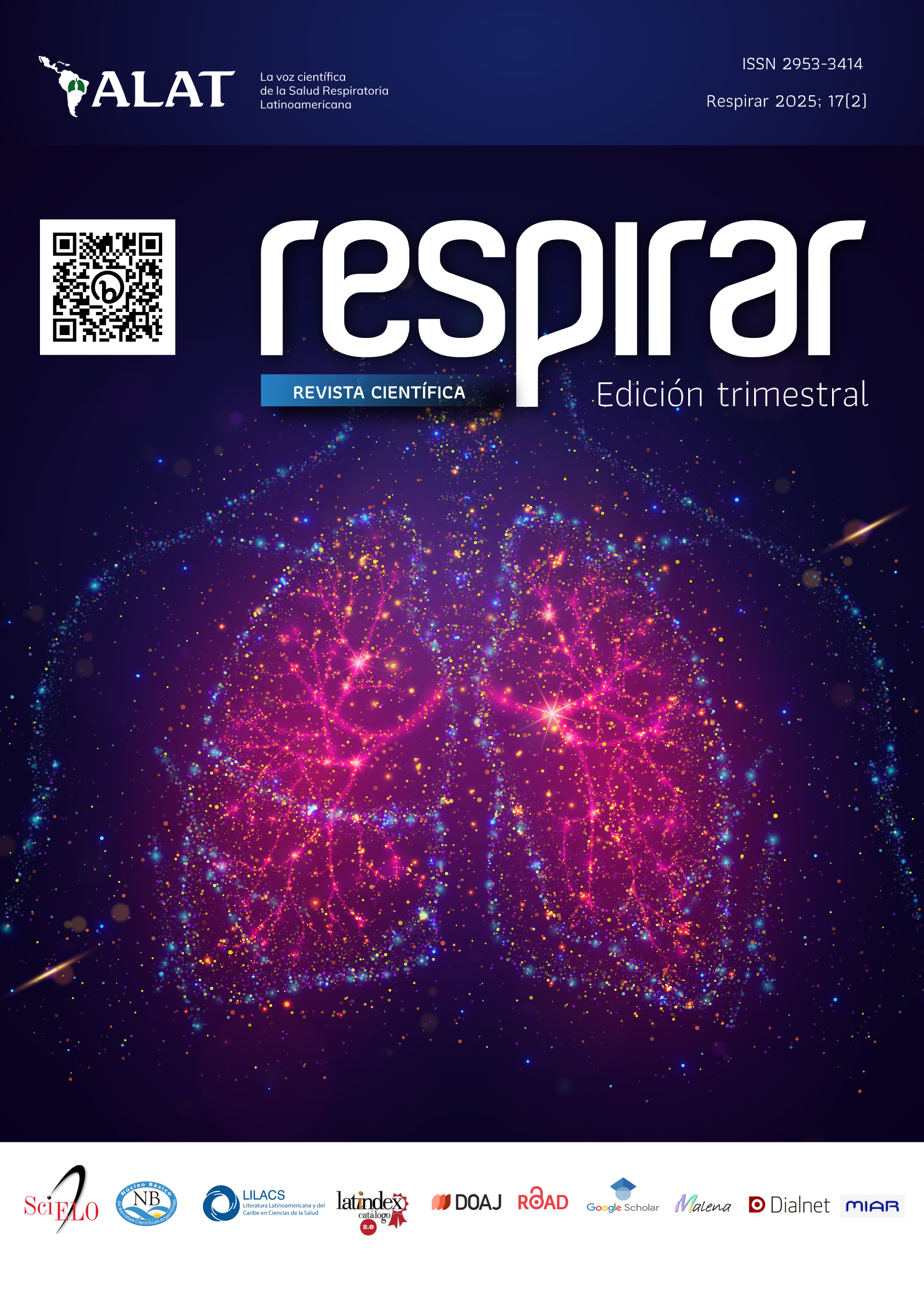Breathing, Heart and Positioning: the Complex World of Kartagener Syndrome in a Clinical Case from Ecuador
Main Article Content
Abstract
Kartagener syndrome is an autosomal recessive disease that affects approximately 1 in 10,000 to 30,000 individuals worldwide. It is part of the primary ciliary dyskinesia spectrum, characterized by the classic triad of situs inversus, bronchiectasis, and chronic sinusitis, due to the dysfunction of cilia responsible for mucus transport and proper organ positioning during embryonic development. Patients present with chronic respiratory symptoms from infancy, such as recurrent infections in the sinuses and lungs, persistent cough and respiratory difficulties. Diagnosis is based on clinical symptoms and genetic or microscopic tests confirming ciliary dysfunction. Management is symptomatic, focusing on controlling infections and improving quality of life through respiratory physiotherapy and antibiotics. A case is presented of a 31-year-old male diagnosed a year ago at Monte Sinai General Hospital. Throughout his life, the patient experienced recurrent respiratory infections and was diagnosed with bronchiectasis and a positive culture for Pseudomonas aeruginosa. In April 2024, he was admitted with complicated pneumonia and respiratory failure, passing away within 72 hours due to complications such as sepsis and multiple organ failure. This case highlights the severity and complications associated with Kartagener syndrome, emphasizing the need for comprehensive medical care.
Article Details
Section

This work is licensed under a Creative Commons Attribution 4.0 International License.
How to Cite
References
Armengot Carceller M, Escribano Montaner A, Samper GJ, Carda Batalla MC. Estudio del transporte mucociliar y de la ultraestructura ciliar nasales en pacientes con síndrome de Kartagener. Arch Bronconeumol 2005;41(1):11-5. Doi: 10.1157/13070275.
Zurcher K, Kawashima A. Kartagener’s Syndrome. N Engl J Med 2021;384(12):e45. Doi: 10.1056/NEJMicm2028152.
Kumar A, Verma AK, Kumar A et al. Kartagener syndrome: A review of three cases. Sahel Med J 2015;18(4):203. Doi: 10.4103/1118-8561.176590.
Shapiro AJ, Davis SD, Polineni D et al. Diagnosis of Primary Ciliary Dyskinesia. An Official American Thoracic Society Clinical Practice Guideline. Am J Respir Crit Care Med 2018;197(12):e24-e39. Doi: 10.1164/rccm.201805-0819ST.
National Library of Medicine. DNAH5 dynein axonemal heavy chain 5 [Homo sapiens (human)] - Gene - NCBI [Internet]. [Consultado 8 oct 2024]. Disponible en: https://www.ncbi.nlm.nih.gov/gene/1767
National Library of Medicine. DNAI1 dynein axonemal intermediate chain 1 [Homo sapiens (human)] - Gene - NCBI [Internet]. [Consultado 8 oct 2024]. Disponible en: https://www.ncbi.nlm.nih.gov/gene/27019
Djakow J, Svobodová T, Hrach K et al. Effectiveness of sequencing selected exons of DNAH5 and DNAI1 in diagnosis of primary ciliary dyskinesia. Pediatric Pulmonology 2012;47: 864-875 Doi: 10.1002/ppul.22520.
Tadesse A, Alemu H, Silamsaw M, Gebrewold Y. Kartagener’s syndrome: a case report. J Med Case Rep 2018;12(1):5. Doi: 10.1186/s13256-017-1538-2.
Ashorobi D, Fernandez R. Asplenia. StatPearls 2024. [Internet]. [Consultado 8 oct 2024]. Disponible en: https://www.ncbi.nlm.nih.gov/books/NBK538171/?utm_source=chatgpt.com
